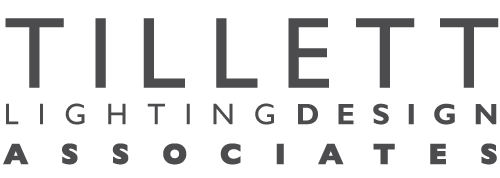Notes From Light Symposium:
Natural Light - Daylight and Artificial Light for Mankind
November 15, 2010
Two Mondays ago I returned from Stockholm, where I was attending an international 3-day conference, a gathering of scientists, urban planners, lighting designers, architects, engineers, landscape designers and academics; the event was called “Light Symposium: Natural Light – Daylight and artificial light for mankind.” It was a series of conversations on the barriers we face as we try to incorporate new technology in lighting even as we reduce our energy consumption; on the problems we have caused by embracing these technologies, almost certainly prematurely; and on the importance, safety and future potential of day-lighting our interiors. Interestingly I was one of only three Americans at the conference, which included many of the scions of the international lighting community as well as students and practitioners from all over Europe, Australia and China.
I was there as an environmental psychologist, a lighting designer and an American. The first morning’s lectures were as distressing as they are invisible here in the US. The Italian astronomer Ferdinando Patat of the University of Padua spoke about the very real disappearance, globally, of “astral windows,” dark spaces that allow us to see the sky at night. Dr. Abraham Haim, a Professor of Environmental Biology at the University of Haifa, explained the effect of losing the “dark phase” in our circadian systems, where overlighting inhibits production of the hormone melatonin, one of the most important regulators in the human body. In my comments that morning I pointed out that light is both a condition of the world as well as a social phenomenon, and while much of my work addresses the psychological issues of fear and anxiety in urban environments at night, an even more pressing issue is that we have come to expect a level of visual spectacle in our night lighting, calling for ever brighter, more lit spaces. I also reviewed some of the many documented environmental effects of nighttime illumination on the communication, reproduction, orientation, migration and hibernation patterns in multiple species, including, astoundingly, aquatic animals. All of us – the astronomer, the biologist and I, as well as most of the speakers on Days 2 and 3 – agree that there is, and there must be, a future solution that maintains safety in our cities with less light; with design and engineering more nuanced, more thoughtful and more careful than what we live with now.
Much of the discussion at the Royal Institute of Technology was about technology both generally and specifically. Generally in that we see the lighting industry simply swapping out new technologies such as LED (light-emitting diode) and compact fluorescent lighting to replace the old incandescent bulbs. Many of us spoke about LEDs, which are becoming more and more prevalent worldwide. The widely touted “solution” of LEDs may be a short-term fix; they are not cheaper nor do they provide better light – they last longer and use less energy. But their components – the parts that control the energy going to the actual bulbs – are not rated at all for life or efficiency. People who sell LEDlighting are selling products, not re-evaluating practice; we suggest taking a longer view.
More alarmingly a report appeared in my in-box last Monday morning forwarded by Joachim Ritter, Director of the Professional Lighting Design Association, summarizing a study done by ANSES (the “Agence nationale de securite sanitaire de l’alimentation, de l’environment et du travail, the French National Agency for Food. Environmental and Occupational Health Safety) “strongly suggesting that high-power LEDs can be detrimental to human health.” The report says, “The issues of most concern identified by the Agency concern the eye due to the toxic effect of blue light and the risk of glare. The blue light necessary to obtain white LEDs causes toxic stress to the retina. Children are particularly sensitive to this risk, as their crystalline lens is still developing and is unable to filter the white light efficiently.” Ritter goes on to say that this is not what the lighting industry expected to hear; “hopes were high that the LED would bring substantial energy savings as well as investments into new lighting systems…Again we are confronted with the fact that light can have aconsiderable effect on human life and health, and that much, much more research is required before we can dare to embark on yet another irreversible adventure.” Shocking indeed.
Many speakers talked at length about designing using natural light, envisioning daylight as an architectural element that contributes to live-ability, sustainability and comfort in contemporary design. But Roger van der Heide, Chief Design Officer of Philips Lighting, pointed out that daylight, like every other natural resource, is not free. There is a cost to designing and building windows, to manufacturing and insulating glass, to measure heat loss and solar gain, and to extending daylight into rooms.
I suppose it’s encouraging that the lighting industry supported and joined scientists and researchers in hosting the students and other participants even as we agreed on the need to fundamentally change the paradigm of lighting around the world. Much the way traffic experts predict that adding extra lanes for cars will simply fill the roads with more cars, Professor Patat remarked that if we simply replace what we have, it won’t solve the problem – people will always want more light. He says “If it is certainly true that with LEDs one can produce the same amount of light with much less energy, it is equally true that with LEDs one can produce much more light with the same amount of energy.” Collectively we have to use light more intelligently and creatively. This is not an aesthetic problem; it is quickly becoming a problem of ecology and biology, astronomy and human health.

